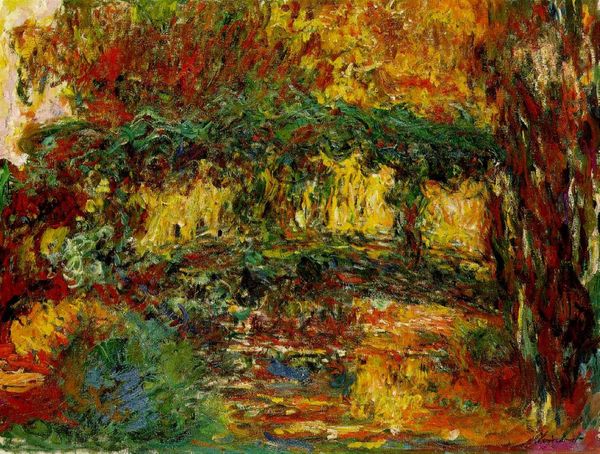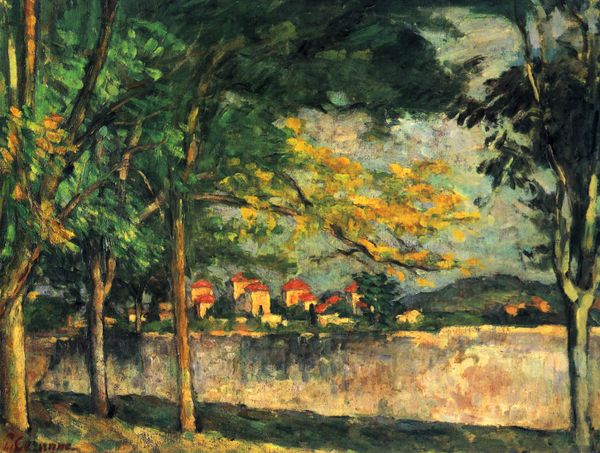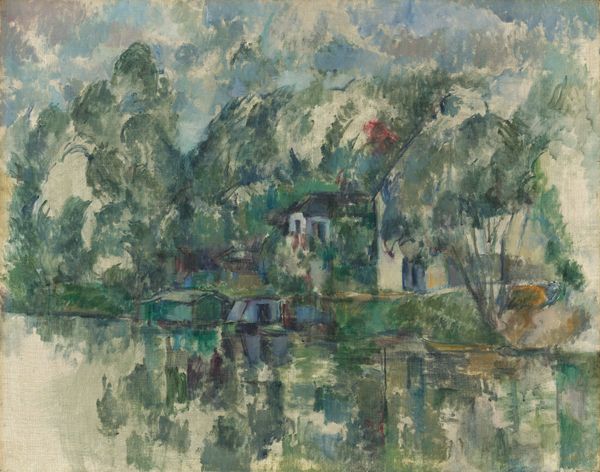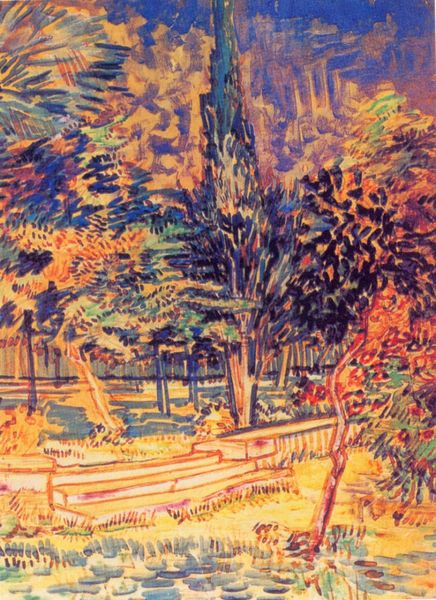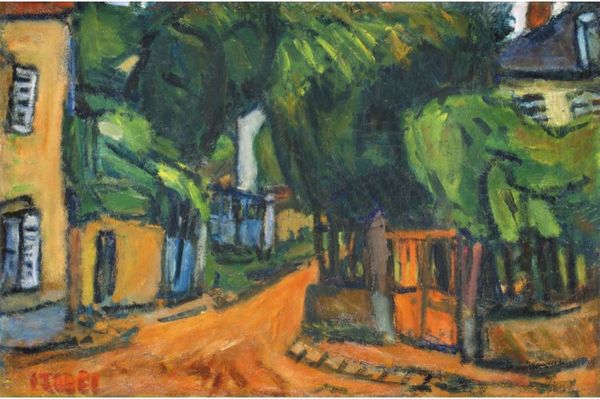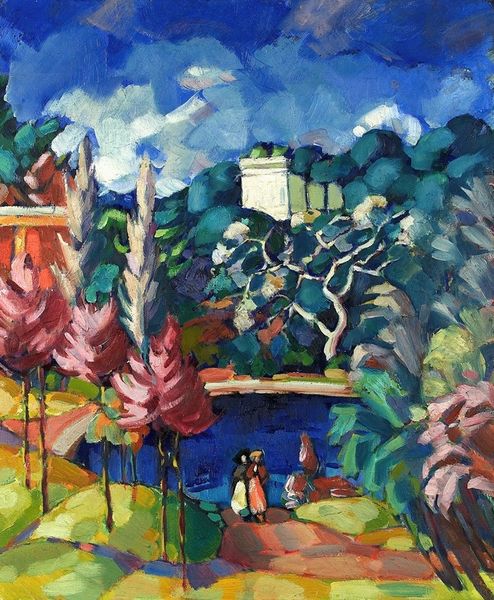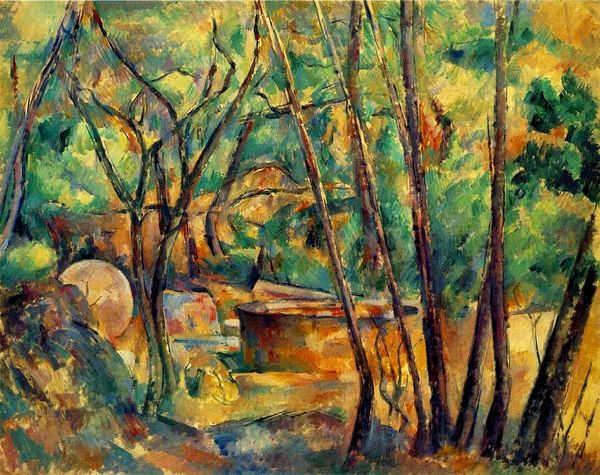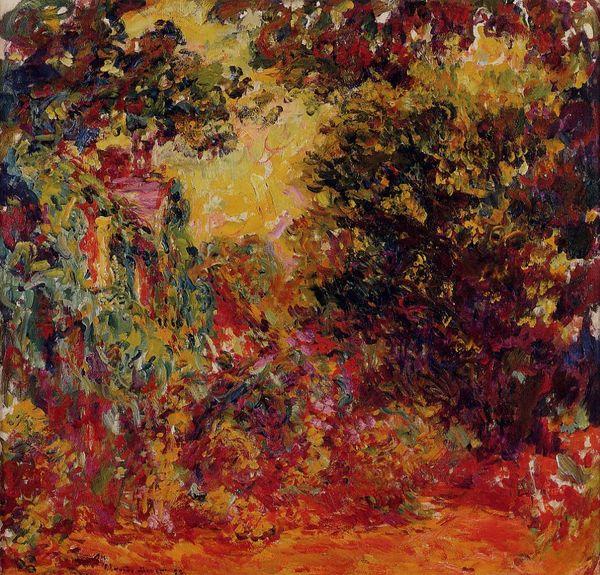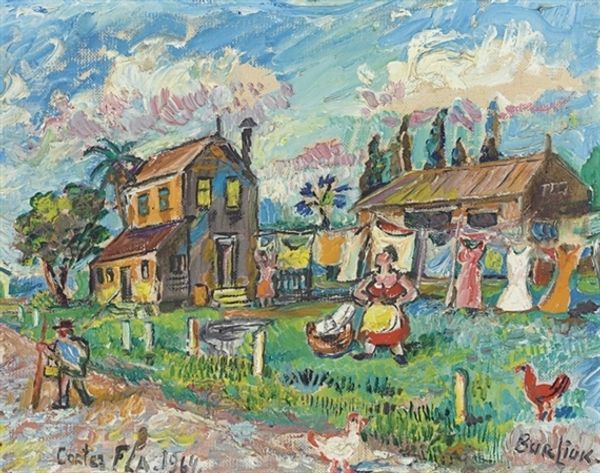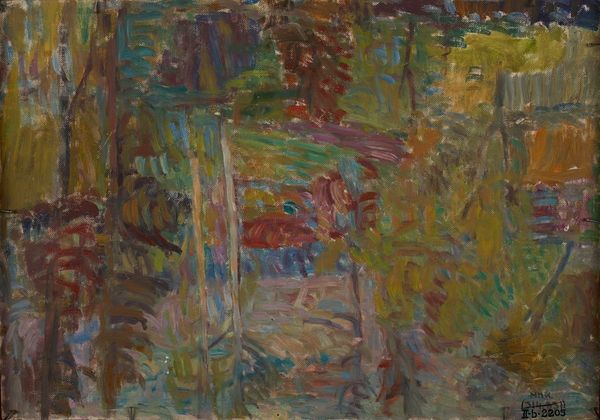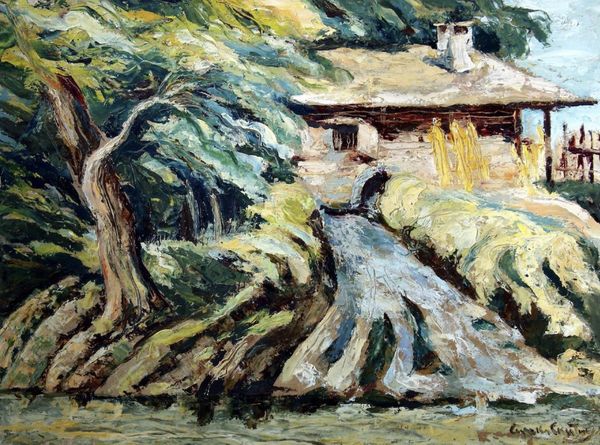
Dimensions: 44.5 x 64 cm
Copyright: Public domain
Curator: Korovin's "A Boulevard in Paris," painted in 1939 with oil on canvas, captures a bustling city scene. The thick impasto application immediately pulls the eye. What's your impression? Editor: It's shimmering! The blurred figures, the wet street reflecting light, it’s all a bit melancholy but very evocative. There's a deep nostalgia present; the symbolic representation of transient life really stands out. Curator: The quick brushstrokes certainly contribute to that sense of transience. Looking at the materiality, the visible brushwork breaks down any illusion, emphasizing the labor and construction of the scene rather than its photographic representation. Editor: Yet, within those strokes, recognizable symbols emerge: the blurred figures mirror collective memories of Parisian street life; there is a universality here, an icon of sorts. Did Korovin imbue Paris with its known historical baggage through recognizable compositional elements? Curator: I would say so. It is worth looking closely at the canvas. The texture alone conveys the hectic pace, with each dab a conscious act of construction. Also, consider the context; this piece was created on the eve of the Second World War, when Paris held complicated significances both material and symbolic, right? Editor: Exactly, Paris—a place carrying dreams, and anxieties—intensified as Europe faced impending disaster. The choice to obscure faces and movements transforms the scene into a mirror reflecting those turbulent emotions back to us, the viewers. It's less about individual lives, more about the cultural feeling, loaded with premonition. Curator: Precisely! We’re not necessarily invited into the scene so much as asked to consider how it was made, both the physical picture, and what it evokes of pre-war artistic and urban culture in France. The tension between the technique and subject feels palpable. Editor: This canvas definitely reminds us that artworks preserve stories that often lie far beyond initial appearances; images shape memory as much as memory shapes the image itself. Curator: Yes, and thinking about how those images were painstakingly rendered with such immediacy opens up whole new perspectives. Editor: Absolutely, considering that visual exchange we can depart feeling thoroughly enriched, and dare I say it? Reflective, in keeping with the subject matter.
Comments
No comments
Be the first to comment and join the conversation on the ultimate creative platform.
